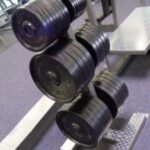Pain in the groin, pelvis, stomach? The pain may not be a regular body ache or a simple pulled muscle. For many construction workers, the onset of sudden pain in the groin region is commonly thought to be a minor work injury and, therefore, treatment is generally delayed. Unfortunately, for some patients, the pain may be associated with an inguinal hernia and the delay in treatment can worsen the hernia condition. For workers in the construction or heavy industrial fields, understanding the cause of hernia, the symptoms and treatment options as well as the methods for hernia prevention, will ensure a faster recovery period and a quicker return to the work force.
The term “hernia” is used to describe a state in which a weakening of the abdominal wall occurs resulting in a sudden rupture or tear, followed by a protrusion of the intestines. Most often, this protrusion is what attributes to sudden abdominal pain that is often mistaken for a simple pulled muscle. For many individuals, self diagnosis will often lead to an attempt to treat the hernia at home using products generally recommended for muscle strains. Such home remedies, used in self diagnosis of hernia, might include anti-inflammatories, muscle relaxers, heating pads and rest. When symptoms do not dissipate, consultation with a physician is then pursued.
When diagnosed with an inguinal hernia, the physician may recommend immediate referral to a general surgeon for surgical hernia repair. However, in some cases, the physician may attempt a sort of massaging technique, on the industrial employee, in which the intestine is pushed followed by the use of a tress. A tress is a supportive garmet which will place pressure on the hernia, allowing time for natural healing to occur. In the case of unsuccessful treatment, surgery may be the only option to cure the hernia diagnosis. While there are several surgical options for the injured employee, the most common involves an open, invasive surgery, in which the hernia is repaired, meshing is placed to work as reinforcement in the abdominal wall and the incision is then closed with sutures. With this type of surgery, the employee can generally plan to be out of work for four to six weeks.
Following surgical recovery, the employee may return to work, initially, under a light duty capacity. Most often, the light duty restrictions will include no heavy lifting and limited physical activity. The physician may also opt to limit the number of hours the employee can work within a week. With time, however, as the incision heals, the employee should return to a full duty work capacity.
Within the construction and industrial fields, educating employees in the methods to prevent muscle strains, such as inguinal hernias, will ensure a more healthy workforce and control over the workers’ compensation claims. With appropriate education in body mechanics, such as bending at the knees when lifting items, the employee will ensure the employee’s are trained in the areas where the most common bodily injuries occur. Additionally, allowing an industrial employee, who suffered from inguinal hernia, to return to work under light duty will provide a two prong response. First, light duty allows the injured employee an opportunity to return to work, feel productive, and will decrease the opportunity for development of an associated mental health response, such as depression. Secondly, the light duty employee will serve as a “reminder” to other employees of the danger with improper body mechanics.
As employers in the construction and industrial work force, understanding the implications improper body mechanics will have on your work force, will enable the company to obtain better control over the incidence of workers’ compensation claims. For many employees, within these physically demanding work environments, understanding the implications of inguinal hernia will have not only on employment but also on the personal life, will ensure a more efficient treatment plan and return to work process is in place.
When suffering from a work related injury, involving muscle strain or groin pain, report the incident to the employer immediately and seek medical attention as the condition may be attributed to an inguinal hernia. For more information regarding hernia repair, visit www.healthsquare.com.


